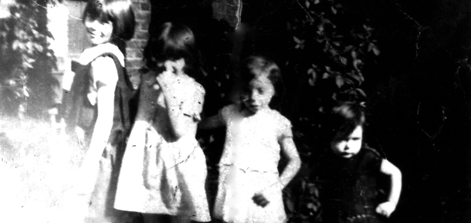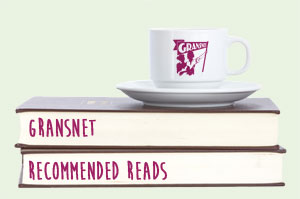Are childhood experiences of the late 1930s and early 1940s really that different from those of today? Author J.M. Maloney tells the story of the six Jarman sisters who were evacuated during the Second World War and sent to Hailsham in East Sussex from their South London home as soon as the war broke out. While adjusting to a new home and a new life, the girls soon found out that fitting in wasn’t quite as easy as they’d hoped.
Interviewing my mother and her five sisters, who are still very much going strong in their 80s and 90s, was a joy and has brought me closer to them.
Their new life in Hailsham was very unlike the one they were used to in Abbey Street, Bermondsey, where the fresh air, space and greenery contrasted with bustling streets, houses and factories billowing smoke.
When they and many other evacuees boarded the train from London Bridge on 1 September 1939, the girls – Mary, 14, Joan, 12, Sheila, nine, Kath, seven, Pat, five, and three-month-old Anne – counted themselves as lucky. Although they were leaving their father behind, their mother was going with them because Anne was just a baby. And although Annie had insisted that they would remain together – ‘All or none’ – that was easier said than done.
On arrival, the evacuees were led into a community hall where local home owners were paid 10s 6d per week for every child they took in and 8s 6d for each extra child. But no one wanted six girls and their mother, and, at the end of the day, they and another large family – their friends from Bermondsey – were the only ones left.
A few days later, they were lucky enough to be moved into a vacant house in Battle Road where their new life began; starting a new school, making new friends, and for Mary, who had left school, finding a new job.
One day Joan had been playing on the swings and roundabout at ‘the rec' when a girl, who had obviously been listening to her parents, told her, ‘You shouldn't be playing here. It's for the people of Hailsham. We pay our rates and taxes!'
But Annie had a history of illness that had seen her in and out of hospital back in London - the dreaded disease of the time, tuberculosis (colloquially known as ‘consumption’), for which there was no cure. The girls found themselves increasingly bringing themselves up with Mary getting a job at the local laundry and later on a farm in the Land Army. Whilst she went out to work and brought in some much-needed money, undertaking a fatherly role, Joan took over her mother’s duties in cooking, cleaning, sewing and generally looking after her younger sisters.
For the most part, the people of Hailsham were kind to them but there was some resentment. One day Joan had been playing on the swings and roundabout at ‘the rec’ when a girl, who had obviously been listening to her parents, told her, ‘You shouldn’t be playing here. It’s for the people of Hailsham. We pay our rates and taxes!’
A neighbour, who was one of their teachers, rebuked them for playing in the street outside their house – something they had always done back in Bermondsey. They hadn’t been used to having a garden. School life was also difficult to adjust to and they became painfully aware that the level of education they had received at schools in Bermondsey was far below the expected standard in Hailsham, and it was difficult for them to catch up.
Whilst it was true that all evacuees had to go through this period of adjustment, the vast majority lived with host families and so learnt incrementally. But for the Jarman sisters, who had been given an empty house, their assimilation into the community was more frequently one of trial and error.
The girls had all been taught traditional housewife skills by their mother and so were very capable. As the war progressed and rationing began, ‘Make do and Mend’ was the official government advice and Mary would make her sisters clothes, darn socks and turn old ripped shirts of their father’s into blouses. Joan would make food go a long way with stews and ‘Monday pie’ all made from leftovers.
Their adventures here during their formative years, before returning to Bermondsey at the end of the war, were never to be forgotten and have helped forge their characters and their spirit of unity. They are still incredibly close, both geographically and mentally.
Their evacuation years saw them experiencing enemy aircraft, fear, romance and family tragedy and I am so pleased that I have managed to tell their story.
The Sisters of Battle Road is a true-life novel by J.M. Maloney, the son of Kath. It is published by Corgi and available online and from all good booksellers.



